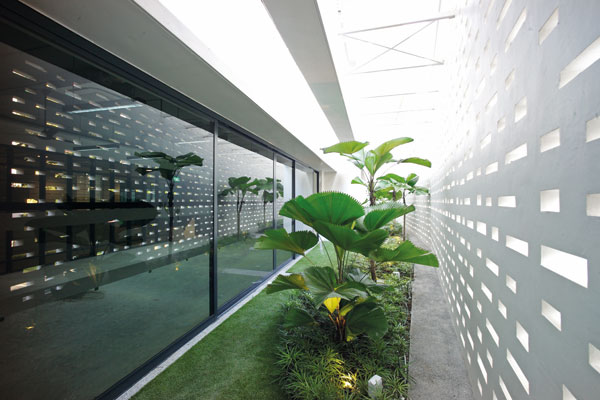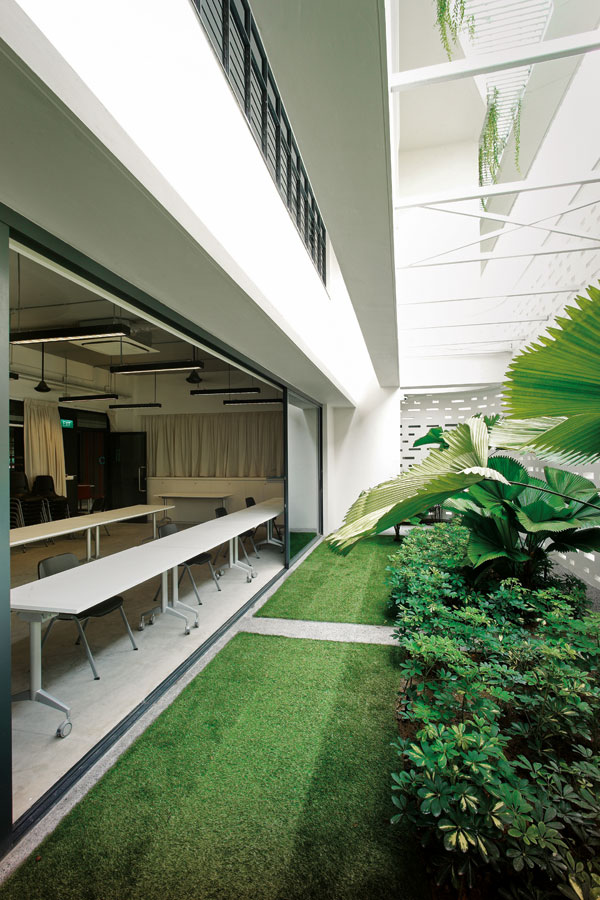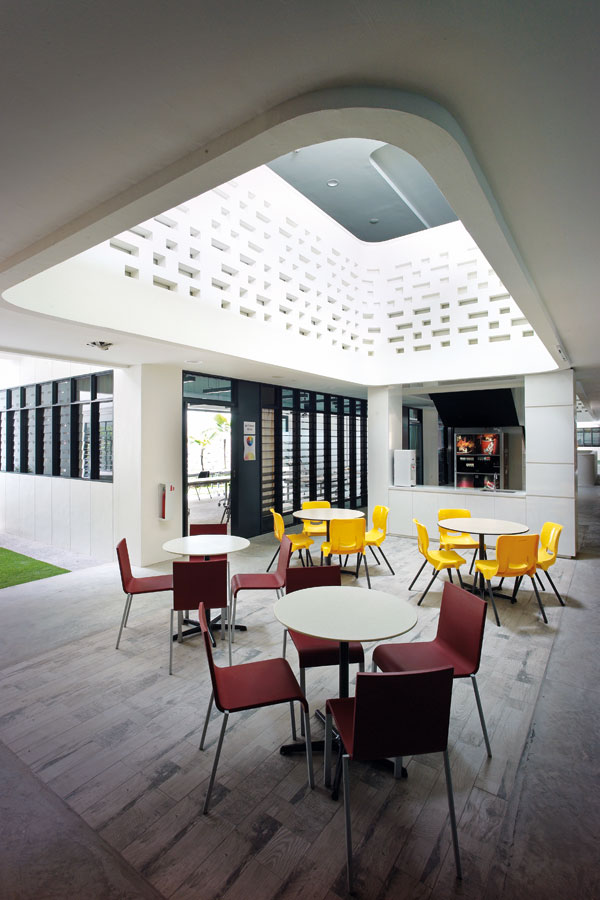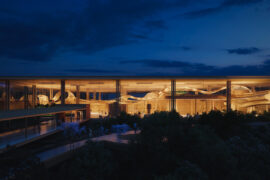LAUD Architects capitalised on the therapeutic quality of greenery for the Agape Village training centre, making vegetation an integral part of the architecture. Felicia Toh writes for Cubes Indesign.

August 24th, 2016
Top image: The creepers and other greenery planted on the building create a soft-edged appearance and a calming atmosphere within
Agape Village is a building designed by LAUD Architects for Caritas Singapore – the social and community arm of the Catholic Church in Singapore, which oversees 24 charities. There, lush greenery forms an integral part of the architecture. Stepping onto the long site in Toa Payoh, one’s eyes are immediately drawn upward to the soft lilting curtain of hanging creepers gracing the facade.
LAUD Architects won a design competition that called for a building to accommodate two main types of programmatic spaces: workshop rooms, and a multi-purpose space that could host events, seminars and lectures.
In response to the brief, LAUD Architects found themselves with a building typology resembling a school, with corridors branching off into numerous training rooms. Director Ho Tzu Yin of LAUD Architects shares that the studio was inspired by Fumihiko Maki’s research into Group Forms, which posits that there is value in the interstitial spaces between defined clusters – in terms of enriching community life and generating collective identity.
LAUD’s exploration led to their proposal of a series of gardens that glue together myriad programmes within the building. In total, there are eight gardens of different scales and quietude.
Lushly planted, the facade is a dynamic undulating wrapper that envelops the programmatic modules and garden pockets, softly deforming in response to key nodes such as entrance drop-offs and large branching trees along the main road. The sense of greenery informs and transforms the experience of the architecture as one moves through the spaces, seamlessly blending the interior and exterior through gradual transitions while allowing diagonal views within the building.
Photography: Melvin H J Tan (courtesy of LAUD Architects)
For the full story, pick up a copy of Cubes Indesign #81 at newsstands.
LAUD Architects
laudarchitects.com

In-between spaces such as the indoor-outdoor pocket gardens were thought of as the glue that would bind the users of the village together

Pocket gardens between training rooms and the perforated exterior walls create flexible, directly accessible in-between spaces and facilitate air flow

The common pantry on the second storey enjoys natural light and a garden aspect. Colourful furniture disrupts the otherwise reductive colour palette
INDESIGN is on instagram
Follow @indesignlive
A searchable and comprehensive guide for specifying leading products and their suppliers
Keep up to date with the latest and greatest from our industry BFF's!

Merging two hotel identities in one landmark development, Hotel Indigo and Holiday Inn Little Collins capture the spirit of Melbourne through Buchan’s narrative-driven design – elevated by GROHE’s signature craftsmanship.

Rising above the new Sydney Metro Gadigal Station on Pitt Street, Investa’s Parkline Place is redefining the office property aesthetic.
The internet never sleeps! Here's the stuff you might have missed

Recognised as winners at the INDE.Awards 2025, Enter Projects Asia in collaboration with SOM have received The Influencer award. Their work on Terminal 2 Kempegowda International Airport Interiors redefines the aesthetics of airport design through a monumental expression of biophilia, sustainability and craftsmanship.

Winners of the 2025 Habitus House of the Year and Editor’s Choice Award respectively, Anthony Gill and Jason Gibney join the podcast to discuss the state of housing in Australia today.